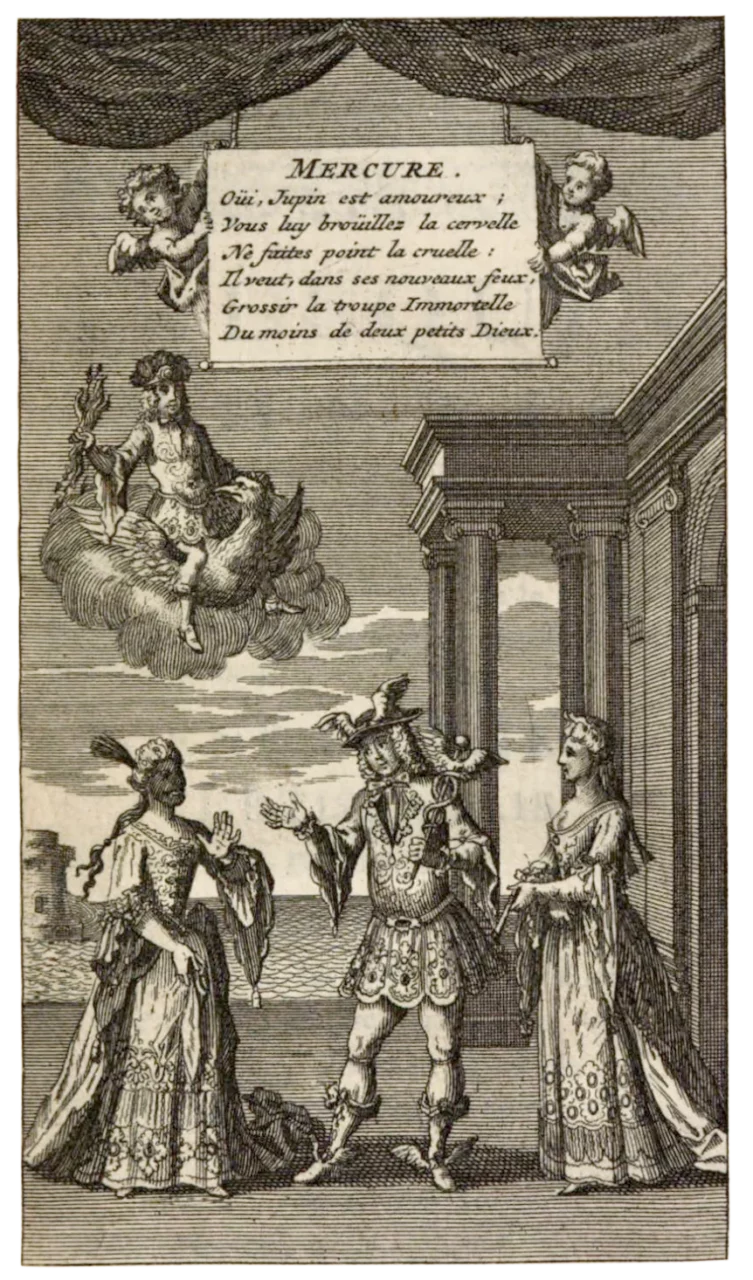VESPACE
Literature
What plays were staged at the Foire Saint-Germain?
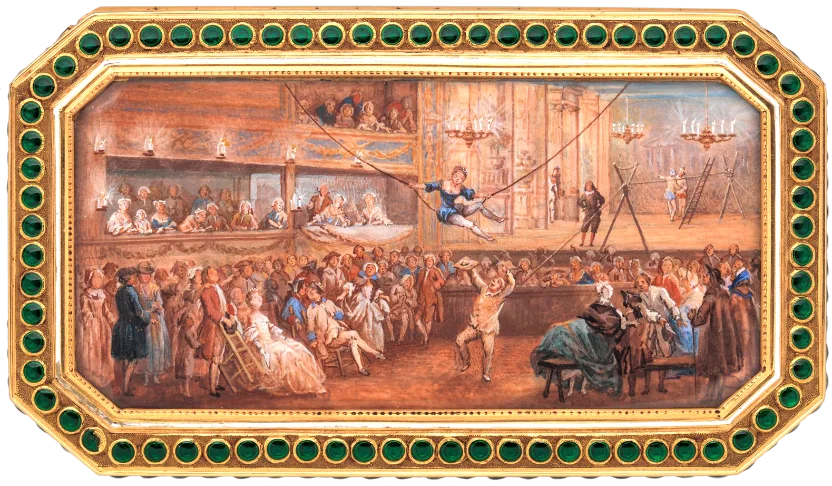
Tightropes before the show
Europe adored funambules (tightrope and slack-line performers): at the Fair, these numbers preceded the theatrical performances. The acrobats were frequently accompanied by musicians and an actor.
The acts could take place onstage and perhaps even on a cord strung across the parterre, over the heads of spectators, as shown in the miniature at left.
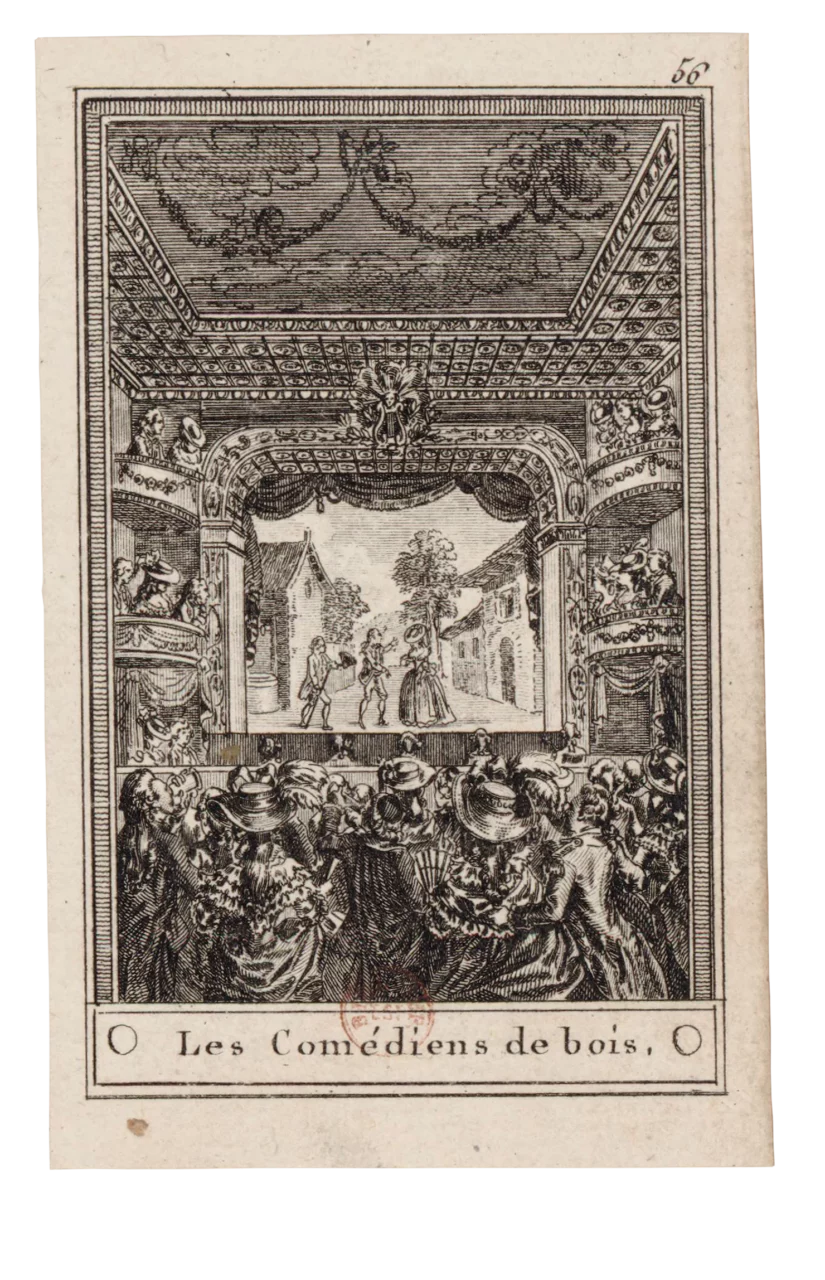
The War of the Theatres
In the eighteenth century, the Comédie Française enjoyed a monopoly on spoken drama in the French capital, Paris. To defend this privilege, they frequently brought legal actions against the Fair theatre operators who attempted to put on shows including spoken text, but the forains always had a ready reply.
When dialogue was banned, the Fair theatres played monologues, often staged in such a way that “dialogue” was still possible, as one character would exit the stage as the other entered to pronounce a reply. The Comédie Française even went so far as to forbid any French at all onstage, to which the Fair responded with plays in invented gibberish, or jargon.
When all speech was barred from the stage, they developed pantomime spectacles. And when, in 1722, actors themselves are banished… it was time for marionettes to make their grand entrance.
Opéra-comique
One approach to circumventing the ban on speaking was to sing. But the Royal Academy of Music (familiarly known as the Opéra), which enjoyed a monopoly on lyric spectacles in Paris, also jealously policed infringements of its privilege. Unlike the Comédie Française, however, the Opéra was sometimes willing to accept payment from Fair theatre operators in exchange for limited rights to sing onstage.
Those who could afford to pay went on to invent the genre of opéra-comique, in which spoken text alternates with lyrics set to popular tunes, called vaudevilles.
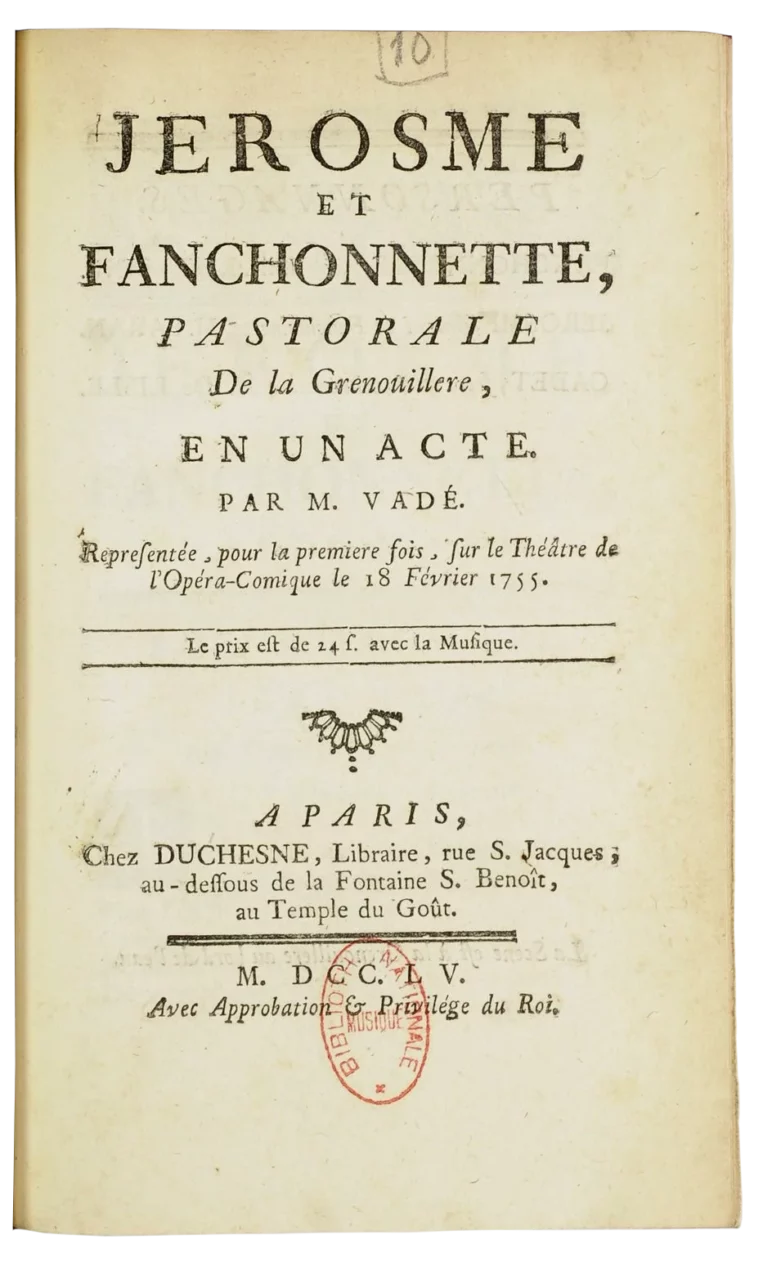
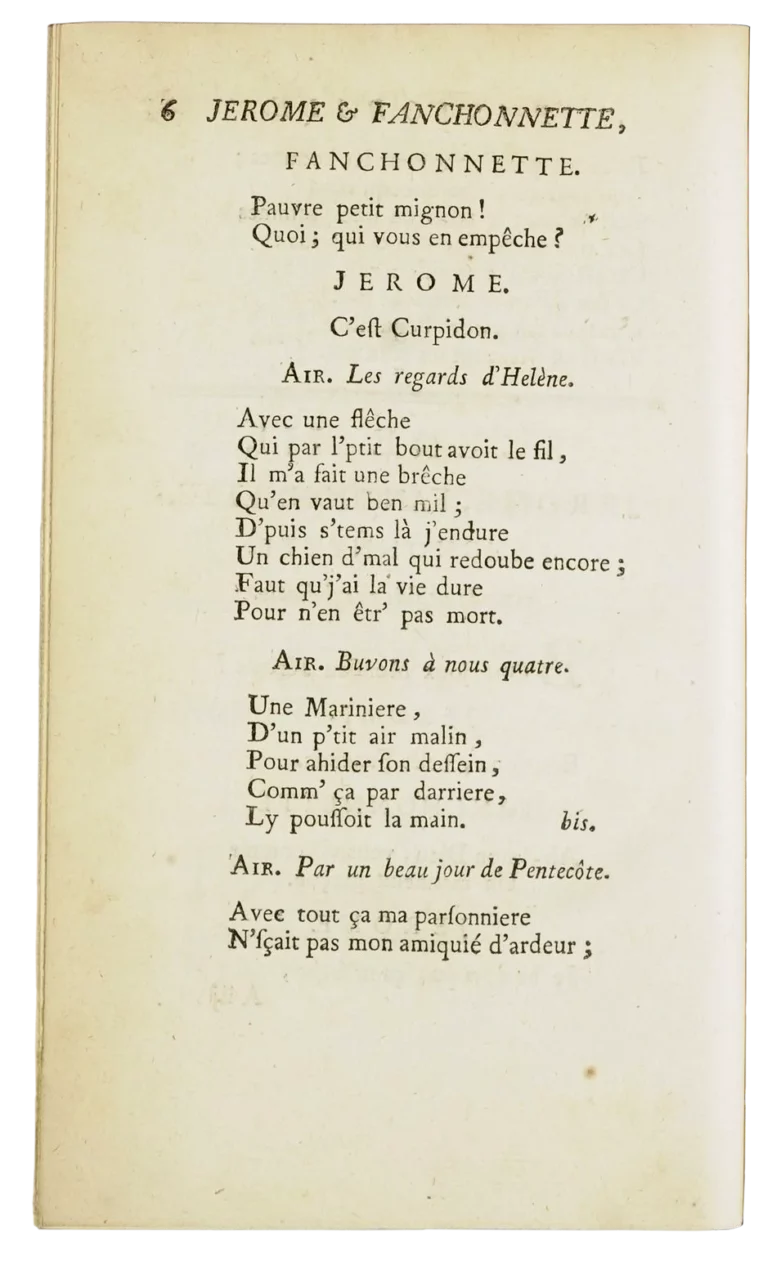
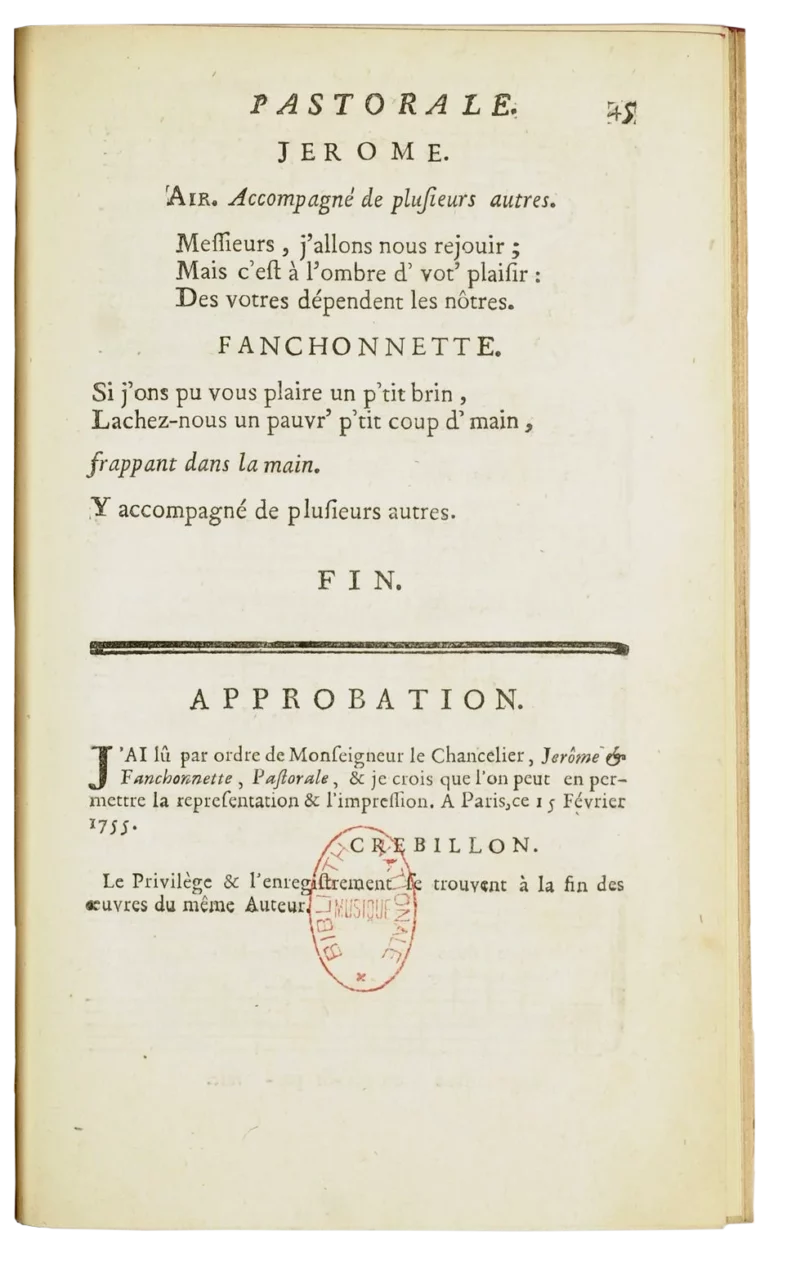
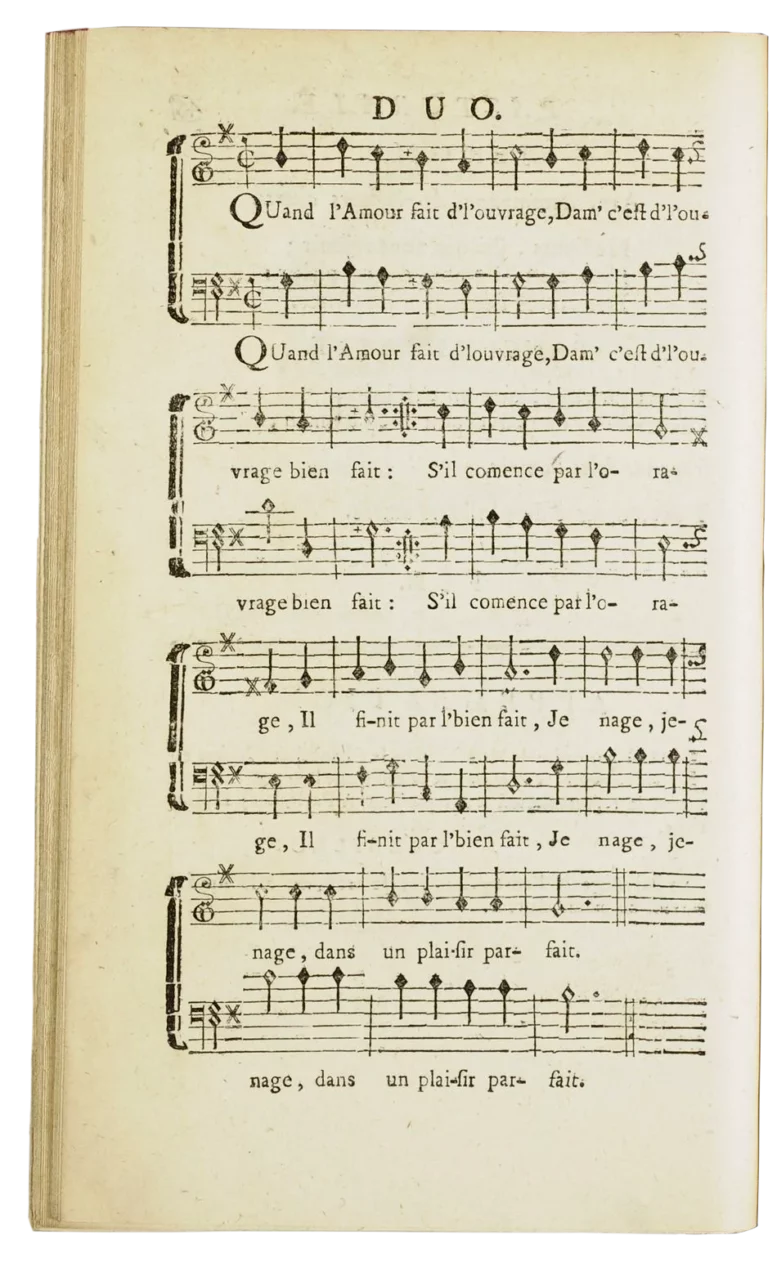
Sign-board plays (pièces à écriteaux)
When the Opéra was in no mood to rent out its privilege, theatre operators and the authors and musicians who wrote for them turned to the audience for help. Scrolls held by actors onstage (and later, panels flown in from above) were printed with couplets that the public could sing, often following the cue of a singer planted in the house. In this way the spectators belted out the narration of the pantomimed scene played out on stage.
Early modern karaoke!

